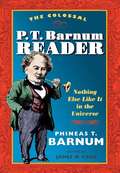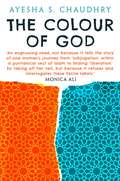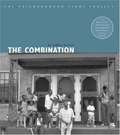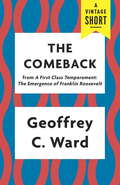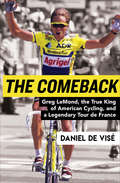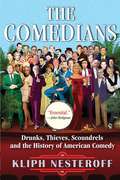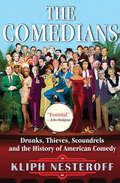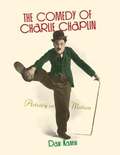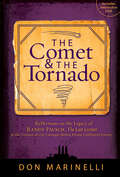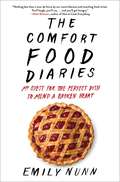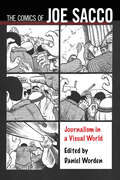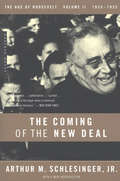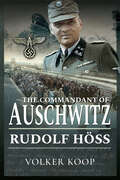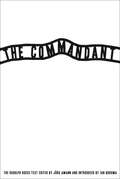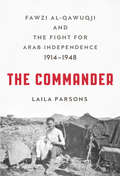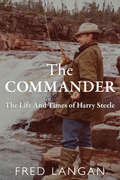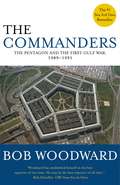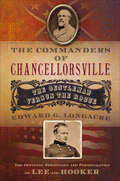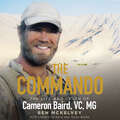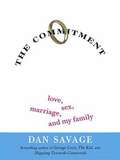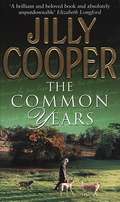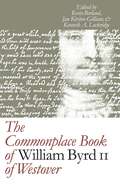- Table View
- List View
The Colossal P. T. Barnum Reader: Nothing Else Like It in the Universe
by Phineas T. Barnum James W. CookThe Colossal P. T. Barnum Reader reveals the trailblazing American showman as, by turns, a moral reformer, a habitual hoaxer, an insightful critic, a savvy "puffer," a master of images, a sparkling writer, a relentless provocateur, and an early advocate of "family" entertainments. Taken together, these selections paint a new and more complete portrait of this complex man than has ever been seen before.
The Colour of God
by Ayesha S. Chaudhry&‘Engrossing.&’ Monica Ali &‘Heartbreaking and really funny.&’ Ross Gay &‘This book fell into my heart.&’ Sabrina Mahfouz &‘The kind of authentic voice that is rarely heard.&’ Saima Mir This is the story of a child raised in Canada by parents who embraced a puritanical version of Islam to shield them from racism. The author explores the joys and sorrows of growing up in a fundamentalist Muslim household, wedding grand historical narratives of colonialism and migration to the small intimate heartbreaks of modern life. In revisiting the beliefs and ideals she was raised with, Chaudhry invites us to reimagine our ideas of self and family, state and citizenship, love and loss.
The Combination
by Ashley NelsonFrom the Publisher: In The Combination, Ashley Nelson paints a beautiful, nuanced portrait of life in one of downtown New Orleans's oldest public housing complexes, the Lafitte. Nelson, who grew up in the project, begins with her own family, merging their often painful history, including her parents' drug use and her mother's death from cancer, through the daily life of the community. A brilliant, lyrical observer, Nelson's interviews let the reader hear from voices rarely engaged: a woman who collects cans for a living, the owner of the corner store, neighborhood drug dealers, the project's Residential Council, and other members of the community more often profiled in grim statistics than actually listened to. She writes about and photographs much of Lafitte and the Sixth Ward, from second lines to ward signs, from the Wild Side to the Real Side, from Dooky Chase to Southern Scrap, stories and images now weighted with an almost unbearable poignancy. This book, part of the Neighborhood Story Project, conveys the depths of people's challenges along with the entrenched violence, racism, and fights for survival in their lives without whining. Nelson's description of her Grandmother's end-of-life struggle with Alzheimer's is short, compassionate, and heart-wrenching.
The Comeback
by Geoffrey C. WardAn eBook short.Franklin Roosevelt contracted polio in the summer of 1921, resulting in permanent paralysis from the waist down. One year later, he went back to work. Noted historian Geoffrey C. Ward, winner of the National Book Critics Circle Award and the Parkman Prize and finalist for the Pulitzer Prize, who is himself a polio survivor, investigates the courage and character of the man who became the greatest president of the twentieth century. "The Comeback," a selection from A First-Class Temperament, the second volume in Ward's monumental biography that began with Before the Trumpet, is the story of one extraordinary man's struggle to regain his feet and reenter public life. Before his illness, FDR's political future had seemed bright. He knew that pity was poison, that if the public understood the extent of his disability his career would be at an end. Roosevelt, therefore, had to teach himself the impossible: how to walk--or seem to walk--again. This is that journey, following the future president from his disastrous attempt to return to his law office to his triumphant march down the aisle at the 1924 Democratic National Convention, where, leaning on his crutches, he delivered the triumphant "Happy Warrior" speech for ill-fated presidential candidate Al Smith and was hailed as a hero. It was FDR's new beginning.
The Comeback: Greg LeMond, the True King of American Cycling, and a Legendary Tour de France
by Daniel de Visé&“Greg LeMond was Lance Armstrong before Lance Armstrong . . . the story of a true hero . . . This is a must read if you believe in miracles.&”―John Feinstein, New York Timesbestselling author In July 1986, Greg LeMond stunned the sporting world by becoming the first American to win the Tour de France, the world&’s pre-eminent bicycle race, defeating French cycling legend Bernard Hinault. Nine months later, LeMond lay in a hospital bed, his life in peril after a hunting accident, his career as a bicycle racer seemingly over. And yet, barely two years after this crisis, LeMond mounted a comeback almost without parallel in professional sports. In summer 1989, he again won the Tour—arguably the world&’s most grueling athletic contest—by the almost impossibly narrow margin of 8 seconds over another French legend, Laurent Fignon. It remains the closest Tour de France in history. &“[A] blend of chaos, kindness and cruelty typifies the scenes that journalist de Visé brings to life in this sympathetic-verging-on-reverential retelling of LeMond&’s trailblazing career (first American to enter the tour, first to win it) . . . As an author in quest of his protagonist&’s motivation, [de Visé] subjects it to extreme torque.&”—The Washington Post &“A great book . . . Well written and thoroughly researched . . . Engrossing and hard to put down. If you&’re a Greg LeMond fan, The Comeback is a must read because it&’s a detailed accounting of his career and―more importantly―his life and person off the bike. It&’s also an important reminder that American cycling did not begin and end with Lance Armstrong.&”—PEZ
The Comedians: Drunks, Thieves, Scoundrels, And The History Of American Comedy
by Kliph NesteroffIn The Comedians, comedy historian Kliph Nesteroff brings to life a century of American comedy with real-life characters, forgotten stars, mainstream heroes and counterculture iconoclasts. Based on over two hundred original interviews and extensive archival research, Nesteroff's groundbreaking work is a narrative exploration of the way comedians have reflected, shaped, and changed American culture over the past one hundred years. <P><P> Starting with the vaudeville circuit at the turn of the last century, Nesteroff introduces the first stand-up comedian--an emcee who abandoned physical shtick for straight jokes. After the repeal of Prohibition, Mafia-run supper clubs replaced speakeasies, and mobsters replaced vaudeville impresarios as the comedian's primary employer. In the 1950s, the late-night talk show brought stand-up to a wide public, while Lenny Bruce, Mort Sahl, and Jonathan Winters attacked conformity and staged a comedy rebellion in coffeehouses. From comedy's part in the Civil Rights movement and the social upheaval of the late 1960s, to the first comedy clubs of the 1970s and the cocaine-fueled comedy boom of the 1980s,The Comedians culminates with a new era of media-driven celebrity in the twenty-first century.
The Comedians: Drunks, Thieves, Scoundrels, and the History of American Comedy
by Kliph NesteroffIn The Comedians, comedy historian Kliph Nesteroff brings to life a century of American comedy with real-life characters, forgotten stars, mainstream heroes and counterculture iconoclasts. Based on over two hundred original interviews and extensive archival research, Nesteroff’s groundbreaking work is a narrative exploration of the way comedians have reflected, shaped, and changed American culture over the past one hundred years.Starting with the vaudeville circuit at the turn of the last century, Nesteroff introduces the first stand-up comedian-an emcee who abandoned physical shtick for straight jokes. After the repeal of Prohibition, Mafia-run supper clubs replaced speakeasies, and mobsters replaced vaudeville impresarios as the comedian’s primary employer. In the 1950s, the late-night talk show brought stand-up to a wide public, while Lenny Bruce, Mort Sahl, and Jonathan Winters attacked conformity and staged a comedy rebellion in coffeehouses. From comedy’s part in the Civil Rights movement and the social upheaval of the late 1960s, to the first comedy clubs of the 1970s and the cocaine-fueled comedy boom of the 1980s, The Comedians culminates with a new era of media-driven celebrity in the twenty-first century.
The Comedy of Charlie Chaplin: Artistry in Motion
by Dan KaminThe Comedy of Charlie Chaplin provides an in-depth analysis of Chaplin as a movement artist and physical comedian.
The Comet & the Tornado: Reflections on the Legacy of Randy Pausch, The Last Lecture & the Creation of Our Carnegie Mellon Dream Fulfillment Factory
by Donald MarinelliAn intimate look at Randy Pausch (author of the blockbuster The Last Lecture) from his friend and colleagueIt is impossible to pinpoint the moment Randy Pausch became a household name, but when he died, millions of people who either read or watched his last lecture on YouTube felt as if they had lost a friend. One man who actually did lose a close friend that day was Donald Marinelli. Affectionately referred to as “the Tornado” in the last lecture, Donald was the whirlwind of energy and creativity who co-founded the Entertainment Technology Center (ETC) at Carnegie Mellon University with Randy. Donald recounts his remarkable journey from Carnegie Mellon’s drama department, through the years building the ETC with Randy, to today, as he helms the center on his own and leads its worldwide expansion. Central to his story are the six years he and Randy shared an office, their differences and commonalities (they both fought cancer), and their priorities, as well as the philosophy of the ETC. Most poignantly, Don reveals what he learned from Randy, whom he describes as “a comet who burst upon the scene like an astral body . . . illuminating his secrets for living life to the fullest for millions of folks who needed such guidance.”
The Comfort Food Diaries: My Quest for the Perfect Dish to Mend a Broken Heart
by Emily NunnIn the tradition of Elizabeth Gilbert and Ruth Reichl, former New Yorker editor Emily Nunn chronicles her journey to heal old wounds and find comfort in the face of loss through travel, home-cooked food, and the company of friends and family.One life-changing night, reeling from her beloved brother’s sudden death, a devastating breakup with her handsome engineer fiancé and eviction from the apartment they shared, Emily Nunn had lost all sense of family, home, and financial security. After a few glasses of wine, heartbroken and unmoored, Emily—an avid cook and professional food writer—poured her heart out on Facebook. The next morning she woke up with an awful hangover and a feeling she’d made a terrible mistake—only to discover she had more friends than she knew, many of whom invited her to come visit and cook with them while she put her life back together. Thus began the Comfort Food Tour. Searching for a way forward, Emily travels the country, cooking and staying with relatives and friends. She also travels back to revisit scenes from her dysfunctional Southern upbringing, dominated by her dramatic, unpredictable mother and her silent, disengaged father. Her wonderfully idiosyncratic aunts and uncles and cousins come to life in these pages, all part of the rich Southern story in which past and present are indistinguishable, food is a source of connection and identity, and a good story is often preferred to a not-so-pleasant truth. But truth, pleasant or not, is what Emily Nunn craves, and with it comes an acceptance of the losses she has endured, and a sense of hope for the future. In the salty snap of a single Virginia ham biscuit, in the sour tang of Grandmother’s Lemon Cake, Nunn experiences the healing power of comfort food—and offers up dozens of recipes for the wonderful meals that saved her life. With the biting humor of David Sedaris and the emotional honesty of Cheryl Strayed, Nunn delivers a moving account of her descent into darkness and her gradual, hard-won return to the living.
The Comics of Hergé: When the Lines Are Not So Clear (Critical Approaches to Comics Artists Series)
by Joe Sutliff SandersContributions by Jônathas Miranda de Araújo, Guillaume de Syon, Hugo Frey, Kenan Koçak, Andrei Molotiu, Annick Pellegrin, Benjamin Picado, Vanessa Meikle Schulman, Matthew Screech, and Gwen Athene Tarbox As the creator of Tintin, Hergé (1907–1983) remains one of the most important and influential figures in the history of comics. When Hergé, born Georges Prosper Remi in Belgium, emerged from the controversy surrounding his actions after World War II, his most famous work leapt to international fame and set the standard for European comics. While his style popularized what became known as the “clear line” in cartooning, this edited volume shows how his life and art turned out much more complicated than his method. The book opens with Hergé’s aesthetic techniques, including analyses of his efforts to comprehend and represent absence and the rhythm of mundaneness between panels of action. Broad views of his career describe how Hergé navigated changing ideas of air travel, while precise accounts of his life during Nazi occupation explain how the demands of the occupied press transformed his understanding of what a comics page could do. The next section considers a subject with which Hergé was himself consumed: the fraught lines between high and low art. By reading the late masterpieces of the Tintin series, these chapters situate his artistic legacy. A final section considers how the clear line style has been reinterpreted around the world, from contemporary Francophone writers to a Chinese American cartoonist and on to Turkey, where Tintin has been reinvented into something meaningful to an audience Hergé probably never anticipated. Despite the attention already devoted to Hergé, no multi-author critical treatment of his work exists in English, the majority of the scholarship being in French. With contributors from five continents drawing on a variety of critical methods, this volume’s range will shape the study of Hergé for many years to come.
The Comics of Joe Sacco: Journalism in a Visual World (Critical Approaches to Comics Artists Series)
by Daniel WordenNamed a Notable Scholarly Publication of 2015 by the Comics Studies SocietyContributions by Georgiana Banita, Lan Dong, Ann D'Orazio, Kevin C. Dunn, Alexander Dunst, Jared Gardner, Edward C. Holland, Isabel Macdonald, Brigid Maher, Ben Owen, Rebecca Scherr, Maureen Shay, Marc Singer, Richard Todd Stafford, and Øyvind VågnesThe Comics of Joe Sacco addresses the range of his award-winning work, from his early comics stories as well as his groundbreaking journalism Palestine (1993) and Safe Area to Goražde (2000), to Footnotes in Gaza (2009) and his most recent book The Great War (2013), a graphic history of World War I.First in the series, Critical Approaches to Comics Artists, this edited volume explores Sacco's comics journalism and features established and emerging scholars from comics studies, cultural studies, geography, literary studies, political science, and communication studies. Sacco's work has already found a place in some of the foundational scholarship in comics studies, and this book solidifies his role as one of the most important comics artists today.Sections focus on how Sacco's comics journalism critiques and employs the standard of objectivity in mainstream reporting, what aesthetic principles and approaches to lived experience can be found in his comics, how Sacco employs the space of the comics page to map history and war, and the ways that his comics function in the classroom and as human rights activism. The Comics of Joe Sacco offers definitive, exciting approaches to some of the most important--and necessary--comics today, by one of the most acclaimed journalist-artists of our time.
The Coming Storm: Test and First-Class Cricketers Killed in World War Two
by Nigel McCreryThe outbreak of the Second World War came towards the closing stages of the 1939 cricket season. Hitler permitted us almost to complete an exceptionally interesting season, Sir Home Gordon, wrote in the Cricketer magazine, When shall we see the stumps pitched again?As the West Indies touring team canceled their last five matches and sailed home before the U-boat threat developed, the treasures at Lords, including the Ashes, were sent to a secret location for safekeeping. The Marylebone Cricket Club cancelled its tour to India - England played under the MCC banner then.During the ensuing conflict twelve test cricketers (five English, two South Africans, one Australian and one New Zealander) perished together with 130 first class players. In this superbly researched sequel to Final Wicket, covering cricketing fatalities during The Great War, this book reveals each mans career details, including cricketing statistics, and the circumstances of death. There is also a brief history of the game during the War. Arguably the period between the two world wars was the golden age of cricket, and this book honors those who made it so only to die serving their countries in a different way.
The Coming of the New Deal: The Age of Roosevelt, 1933–1935 (The Age of Roosevelt #2)
by Arthur M. Schlesinger Jr.Volume two of the Pulitzer Prize-winning author&’s Age of Roosevelt series describes Franklin Delano Roosevelt&’s first tumultuous years in the White House.Coming into office at the bottom of the Great Depression, FDR told the American people that they have nothing to fear but fear itself. The conventional wisdom having failed, he tried unorthodox remedies to avert economic collapse. His first hundred days restored national morale, and his New Dealers filled Washington with new approaches to recovery and reform. Combining idealistic ends with realistic means, Roosevelt proposed to humanize, redeem, and rescue capitalism. The Coming of the New Deal, written with Schlesinger&’s customary verve, is a gripping account of critical years in the history of the republic.&“Monumental…authoritative…spirited…one of the major works in American historical literature.&”—New York Times &“Impelling, an achievement as much in its sensitivity as in its scholarship…It is essential reading.&”—Kirkus Reviews
The Commandant of Auschwitz: Rudolf Höss
by Volker KoopThe renowned WWII historian&’s definitive biography of the notorious German SS officer convicted of war crimes for his role in the Holocaust. Described as one of the greatest mass-murderers in history, Rudolf Höss was the longest-serving commandant of the Auschwitz concentration and extermination camps in Nazi-occupied Poland. He was one of the chief architects behind Hitler&’s Final Solution. In The Commandant of Auschwitz, Volker Koop details Höss&’s military career, his conversion to Nazi ideology, and his ruthless commitment to the Nazi cause. At the age of fourteen, Höss joined the 21st Regiment of Dragoons and rose through the ranks to become the youngest non-commissioned officer in the German Army. After joining the Nazi party in 1922, he was convicted of participating in at least one political assassination, for which he spent six years in prison. In 1934, Höss became a Block Leader at Dachau concentration camp. By 1940, he would be given command of his own camp near the town of Auschwitz. Charged with carrying out the Final Solution of the Jewish question, Höss set about his task with relish. By his own estimation, he was responsible for the deaths of at least 3,000,000 individuals. Justice caught up with Höss after the German surrender. He was arrested on March 11th, 1946, after a year of posing as a gardener under a false name. He was found guilty of war crimes and hanged on April 16th, 1947.
The Commandant of Auschwitz: Rudolf Höss
by Volker KoopThe renowned WWII historian&’s definitive biography of the notorious German SS officer convicted of war crimes for his role in the Holocaust. Described as one of the greatest mass-murderers in history, Rudolf Höss was the longest-serving commandant of the Auschwitz concentration and extermination camps in Nazi-occupied Poland. He was one of the chief architects behind Hitler&’s Final Solution. In The Commandant of Auschwitz, Volker Koop details Höss&’s military career, his conversion to Nazi ideology, and his ruthless commitment to the Nazi cause. At the age of fourteen, Höss joined the 21st Regiment of Dragoons and rose through the ranks to become the youngest non-commissioned officer in the German Army. After joining the Nazi party in 1922, he was convicted of participating in at least one political assassination, for which he spent six years in prison. In 1934, Höss became a Block Leader at Dachau concentration camp. By 1940, he would be given command of his own camp near the town of Auschwitz. Charged with carrying out the Final Solution of the Jewish question, Höss set about his task with relish. By his own estimation, he was responsible for the deaths of at least 3,000,000 individuals. Justice caught up with Höss after the German surrender. He was arrested on March 11th, 1946, after a year of posing as a gardener under a false name. He was found guilty of war crimes and hanged on April 16th, 1947.
The Commandant: An Account by the First Commanding Officer of Auschwitz
by Rudolf HoessThis chilling memoir presents “a graphic and compelling self-portrait” of the Nazi war criminal who oversaw Auschwitz concentration camp (Jewish Book World).SS officer Rudolph Hoess was the longest-serving commandant of Auschwitz. After the war, he was convicted of war crimes and sentenced to death by the Polish Supreme National Tribunal. The amoral sensibility Hoess displayed regarding all that went on in the charnel factory where the industrialization of death was practiced—where probably three million people were literally worked to death, shot or gassed—is still almost beyond belief today. Editor Jurg Amann has taken Hoess's text and produced a work of vital historical importance. The Commandant presents an excruciating insight into Hitler's Final Solution and the nature of evil itself through the prism of the Nazis' totalitarian system, one Hoess and so many others felt no need to question. Ian Buruma's introduction sets this frightening work within a both moral and historical context.
The Commander: Fawzi al-Qawuqji and the Fight for Arab Independence 1914–1948
by Laila ParsonsRevered by some as the Arab Garibaldi, maligned by others as an intriguer and opportunist, Fawzi al-Qawuqji manned the ramparts of Arab history for four decades. As a young officer in the Ottoman Army, he fought the British in the First World War, and won an Iron Cross. In the 1920s, he mastered the arts of insurgency and helped lead a massive uprising against the French authorities in Syria. A decade later, he re-appeared in Palestine, where he helped direct the Arab revolt of 1936. When an effort to overthrow the British rulers of Iraq failed, he moved to Germany, where he spent much of the Second World War battling his fellow exile, the Mufti of Jerusalem, who had accused him of being a British spy. In 1947, Qawuqji made a daring escape from Allied-occupied Berlin, and sought once again to shape his region's history. In his most famous role, he would command the Arab Liberation Army in the Arab-Israeli war of 1948.In this well-crafted, definitive biography, Laila Parsons tells Qawuqji's dramatic story and sets it in the full context of his turbulent times. Following Israel's decisive victory, Qawuqji was widely faulted as a poor commander with possibly dubious motives. Parsons shows us that the truth was more complex: Although he doubtless made some strategic mistakes, he never gave up fighting for Arab independence and unity, even as those ideals were undermined by powers inside and outside the Arab world.
The Commander: The Life And Times of Harry Steele
by Fred LanganOne of Canada’s great entrepreneurial success stories Harry Steele was born in Musgrave Harbour, an isolated outport on the eastern coast of Newfoundland. He went to university, joined the naval reserve, and became a lieutenant-commander in the Royal Canadian Navy. Harry quit in 1974 — he didn’t like the new green uniforms — and went into business. Using money he made in the stock market and his wife Catherine’s real estate investments, Harry bought control of struggling Eastern Provincial Airways. He made it a success and sold it to CP Air several years later. Harry was also highly successful with his other investments, which included the trucking and ferry service company Clarke Transport and the radio broadcasting company Newfoundland Capital Corporation. With a long list of successes, Harry Steele stays true to his roots, living in Gander, Newfoundland.
The Commanders
by Bob WoodwardIt is impossible to examine any part of the war on terrorism in the twenty-first century without seeing the hand of Dick Cheney, Colin Powell or one of their loyalists. The Commanders, an account of the use of the military in the first Bush administration, is in many respects their story -- the intimate account of the tensions, disagreements and debates on the road to war.
The Commanders of Chancellorsville: The Gentleman versus the Rogue
by Edward G. LongacreThe award-winning Civil War historian explores the battle between two strikingly different generals: “Fighting Joe” Hooker and Robert E. Lee.As equally matched in skill as they were opposite in personality, the brash Union Gen. Joseph Hooker boasted of a sure defeat of the reserved Gen. Robert E. Lee. “I’ve got Robert E. Lee right where I want him, and even God Himself cannot stop me from destroying him,” boasted Hooker. Yet the battle of Chancellorsville stands as Lee’s greatest triumph.The story of the two generals has never been explored as it is here. “Fighting Joe” Hooker was brilliant, but also profane and bombastic, and his army so undisciplined that their pursuit of camp “followers” spawned the modern euphemism for prostitute. Robert E. Lee, equally gifted, was known as the definitive devout, self-controlled Southern gentleman, leading an army that was exhausted, underfed, and outmanned. Chancellorsville stands not just as a pivotal battle of the Civil War but as the personal war between two warriors—stalking, striking, and counter-striking their way to ultimate victory or defeat.Praise for the work of Edward G. Longacre, a winner of the Fletcher Pratt and Douglas Southall Freeman awards“Breezy and informative . . . Longacre remains even handed throughout and maintains a lively pace.” —Publishers Weekly“Well-researched, fast paced.” —Pennsylvania History
The Commando: The life and death of Cameron Baird, VC, MG
by Ben MckelveyOn 22 June 2013, Corporal Cameron Baird was a 2nd Commando Regiment Special Forces soldier when he led his platoon into a known Taliban stronghold to back-up another Australian unit under heavy fire. In the pronged firefight, Cameron was mortally wounded. In 2014, Cameron's bravery and courage under fire saw him posthumously awarded the 100th Victoria Cross, our highest award possible for bravery in the presence of the enemy. Cameron Baird died how he lived - at the front, giving it his all, without any indecision. He will forever be remembered by his mates and the soldiers he served with in the 2nd Commando Regiment. THE COMMANDO reveals Cameron's life, from young boy and aspiring AFL player, who only missed out on being drafted because of injury, to exemplary soldier and leader. Cameron's story and that of 4RAR and 2nd Commando personifies the courage and character of the men and women who go to war and will show us the good man we have lost.
The Commitment: Love, Sex, Marriage, and My Family
by Dan SavageDan Savage's mother wants him to get married. His boyfriend, Terry, says "no thanks" because he doesn't want to act like a straight person. Their six-year-old son DJ says his two dads aren't "allowed" to get married, but that he'd like to come to the reception and eat cake. Throw into the mix Dan's straight siblings, whose varied choices form a microcosm of how Americans are approaching marriage these days, and you get a rollicking family memoir that will have everyone--gay or straight, right or left, single or married--howling with laughter and rethinking their notions of marriage and all it entails. .
The Common Years
by Jilly Cooper OBEDuring the ten years she lived at the edge of Putney Common Jilly Cooper walked daily on this expanse of green. For most of the time she lived there she kept a diary, noting the effects of the changing seasons and writing about her encounters with dogs and humans. The book is a distillation of those diaries: an affectionate and enthralling portrait - warts and all - of life on Putney Common. Never has Jilly Cooper written more lyrically about flowers, trees, birds and the natural world; more tellingly about the sorrows - as well as the joys - of caring for dogs and children; or more outrageously about the gossip, illicit romances and jealousies of life in a small community.
The Commonplace Book of William Byrd II of Westover
by Kevin Joel Berland Kenneth A. Lockridge Jan Kirsten GilliamWilliam Byrd II (1674-1744) was an important figure in the history of colonial Virginia: a founder of Richmond, an active participant in Virginia politics, and the proprietor of one of the colony's greatest plantations. But Byrd is best known today for his diaries. Considered essential documents of private life in colonial America, they offer readers an unparalleled glimpse into the world of a Virginia gentleman. This book joins Byrd's Diary, Secret Diary, and other writings in securing his reputation as one of the most interesting men in colonial America. Edited and presented here for the first time, Byrd's commonplace book is a collection of moral wit and wisdom gleaned from reading and conversation. The nearly six hundred entries range in tone from hope to despair, trust to dissimulation, and reflect on issues as varied as science, religion, women, Alexander the Great, and the perils of love. A ten-part introduction presents an overview of Byrd's life and addresses such topics as his education and habits of reading and his endeavors to understand himself sexually, temperamentally, and religiously, as well as the history and cultural function of commonplacing. Extensive annotations discuss the sources, background, and significance of the entries.
